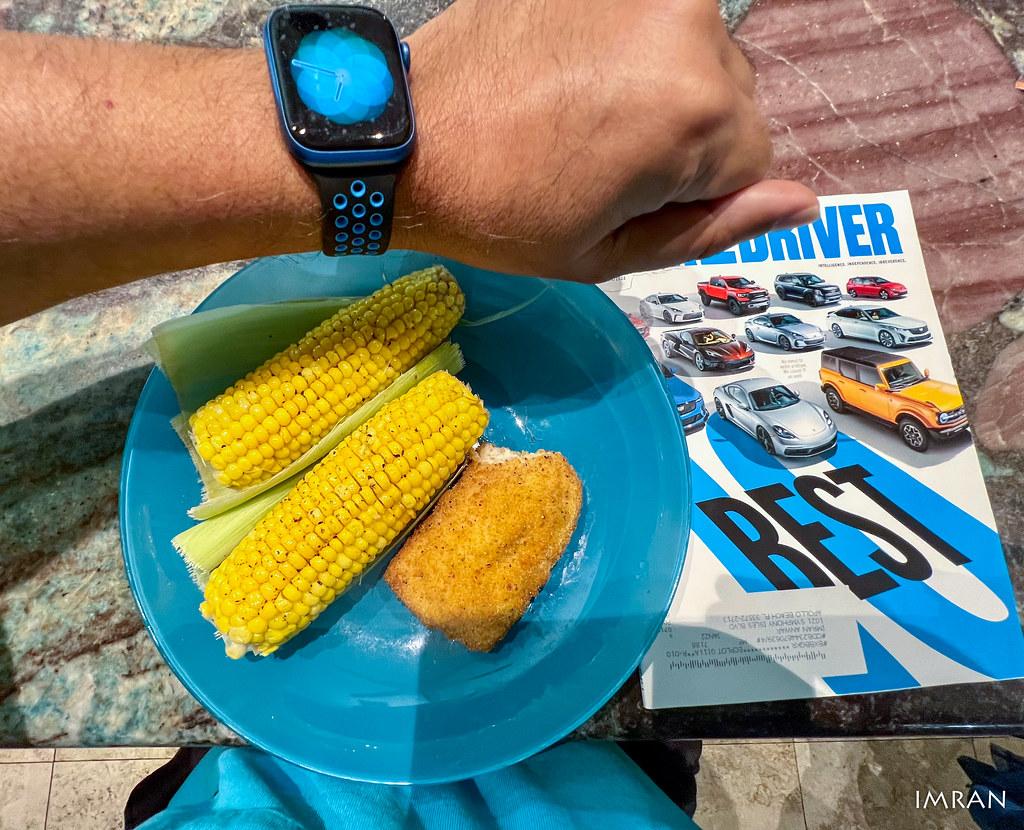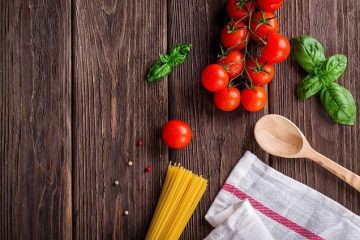Table of Contents
- Understanding the Cultural Significance of Food in Our Lives
- Exploring the Emotional Connections We Form Through Food
- The Role of Food in Celebrations and Traditions
- Nourishment Beyond Nutrition: Food as a Source of Comfort
- Practical Tips for Mindful Eating and Appreciating Foods Meaning
- Q&A
- Concluding Remarks


Understanding the Cultural Significance of Food in Our Lives
Food serves as a universal language, transcending geographical and cultural boundaries. It plays an integral role in establishing social relationships and fostering a sense of community. Many traditions and celebrations revolve around shared meals, where families and friends gather to bond over food. Such occasions often highlight the cultural heritage of a community, reinforcing values, beliefs, and customs that have been passed down through generations. From holiday feasts to everyday dinners, these culinary moments create lasting memories and promote a sense of belonging.
Furthermore, the symbolism associated with different food items can reveal much about a culture’s beliefs and practices. For instance, certain dishes may signify prosperity, luck, or remembrance during significant life events. Foods can also embody cultural narratives, with recipes often rooted in historical circumstances or influences. Consider the role of rice in various cultures, from Asian to Latin American traditions, where it is often present in rituals and as a staple in daily meals. This deep-seated meaning enriches our experiences with food, making it more than just nourishment, but a reflection of our identities.
1. Preservation of Heritage: Traditional recipes are often passed down through families, serving as a connection to ancestry.
- Cultural Exchange: Globalization has introduced diverse cuisines to various regions, fostering a blending of traditions.
- Rituals and Celebrations: Many cultures incorporate specific foods into religious ceremonies or seasonal festivals, highlighting their sacredness.
| Cultural Aspect | Food Item | Significance |
|---|---|---|
| Italian Feast | Pasta | Symbol of family unity |
| Chinese New Year | Dumplings | Wealth and prosperity |
| Thanksgiving (USA) | Turkey | Gratitude and togetherness |


Exploring the Emotional Connections We Form Through Food
The bonds we create through shared meals often transcend the basic act of eating, weaving a rich tapestry of memories and emotions. Each dish we enjoy can evoke feelings of nostalgia, love, or even comfort. The aroma of a particular recipe may transport us back to childhood kitchens, and the sight of familiar ingredients might remind us of family traditions. As we gather around the table, the act of breaking bread can symbolize more than just nourishment; it serves as a bridge between generations, fostering connections that strengthen our family ties and friendships.
Food acts as a medium for storytelling, conveying cultural identities and personal narratives. Every cuisine reflects its people, showcasing traditions, rituals, and histories. Dishes like sushi, paella, or curry are more than just culinary staples; they represent geographical origins and familial lineage. The joy of sharing these meals with others—whether during a holiday feast or a casual dinner—allows us to express our heritage and to connect with others on a profound level. This sharing creates a communal experience that invites conversation, laughter, and warmth, reinforcing the bonds we share through our culinary experiences.
Furthermore, the emotional impact of food extends into times of celebration and mourning. Certain dishes become symbolically significant during pivotal life events, functioning as a comfort or a way to commemorate loved ones. Consider how cake is often central to celebrations like birthdays and weddings, embodying joy and hope. Conversely, comfort foods arise during times of distress, offering solace in the form of familiar flavors. This profound ability of food to encapsulate our emotions highlights why it resonates so deeply within our lives, turning simple meals into powerful catalysts for connection.


The Role of Food in Celebrations and Traditions
Food transcends mere sustenance; it serves as a powerful vehicle for expressions of culture, connection, and tradition. Whether it’s a grand banquet at a wedding or a simple family meal during holidays, the dishes we choose reflect our history and values. Celebrations around the world often feature signature dishes that carry deep meaning, telling stories of heritage and communal ties. For instance, in many cultures, the act of breaking bread together symbolizes unity and hospitality, reinforcing the bonds among family and friends.
Throughout various festivities, specific foods play crucial roles in embodying the spirit of the occasion. Consider these examples of foods and their significance:
- Cake: At birthdays, the cake often embodies joy and the celebration of life.
- Pies: Many cultures use pies during harvest festivals to symbolize abundance and gratitude for the earth’s bounty.
- Sweets: During festivals like Diwali, sweets are shared to symbolize the victory of light over darkness.
Moreover, the ritual of preparing and sharing food helps to foster a sense of belonging. Family recipes, often passed down through generations, represent a living history that binds people together. This tradition of cooking and sharing strengthens intergenerational ties, as stories and memories are woven into the very fabric of the meals served. Consider the following table that highlights various celebrations and their associated traditional foods:
| Celebration | Traditional Food | Symbolism |
|---|---|---|
| Thanksgiving | Roast Turkey | Reflection and gratitude |
| New Year | Black-eyed Peas | Prosperity and good luck |
| Chinese New Year | Dumplings | Wealth and prosperity |


Nourishment Beyond Nutrition: Food as a Source of Comfort
Food serves as more than just sustenance; it embodies a deep emotional connection that resonates with many individuals. The joys of sharing a meal with loved ones or savoring a favorite dish can ignite memories and strengthen bonds. Nostalgia plays a significant role in this phenomenon, often linked to childhood experiences and family traditions. Whether it’s a grandmother’s secret recipe or a dish enjoyed on special occasions, these culinary rituals create a comforting embrace that nourishes the soul.
Many people find solace in cooking and eating, transforming the act into a therapeutic experience. Cooking can be a form of art, a creative outlet that promotes mindfulness. The rhythmic chopping of vegetables or the aromatic blend of spices can offer a meditative escape from the hustle and bustle of daily life. Food preparation encourages experimentation and personal expression, leading to a deeper appreciation of both the ingredients and the culinary process itself. The pleasure derived from crafting something delicious fuels our passion for cooking, ensuring that the act of eating transcends basic nourishment.
In various cultures, food is a universal symbol of hospitality and connection. Meals shared during celebrations highlight the importance of community and the collective joy of togetherness. Whether it’s a festive gathering or a simple dinner, the experience of sharing food fosters an environment where relationships thrive. The table becomes a sacred space of laughter and conversation, where breaking bread invites warmth and love. This multifaceted role of food strengthens social bonds and emphasizes its importance as a source of comfort, reminding us that what we eat can significantly impact our emotional well-being.


Practical Tips for Mindful Eating and Appreciating Foods Meaning
Embracing mindful eating can transform your relationship with food, turning each meal into an opportunity for appreciation rather than a hurried necessity. To start, take a moment to assess your environment before you eat. Choose a space that is quiet and free from distractions. Set the table, if you can, and gather your utensils neatly. When you sit down to eat, take a few deep breaths to ground yourself in the present moment. This intention can heighten your awareness of the flavors, textures, and aromas of your food.
During your meal, allow yourself to savor each bite. Chew slowly and appreciate the different layers of taste that each ingredient contributes to the dish. Consider the journey of your food—from the farmers who grew it to the cooks who prepared it. Engaging in this thought process deepens your connection to what you are consuming and fosters gratitude. You might even want to jot down your observations about the textures and flavors in a food journal, creating a personal archive of your culinary experiences.
| Tip | Description |
|---|---|
| Slow Down | Take your time when eating to fully enjoy your meal. |
| Engage Your Senses | Notice the smell, taste, and texture of your food. |
| Reflect | Think about where your food comes from and appreciate the effort behind it. |
In addition to being mindful during your meals, practicing gratitude can significantly enrich the food experience. After finishing your meal, take a moment to reflect on what you consumed. Consider how each dish nourished you and the care that went into its preparation. You can even adopt a daily ritual where you express gratitude for at least one ingredient from your meals, reinforcing a profound respect for food and its place in your life. This practice can help shift your mindset from viewing food merely as sustenance to seeing it as a meaningful part of daily living.




0 Comments